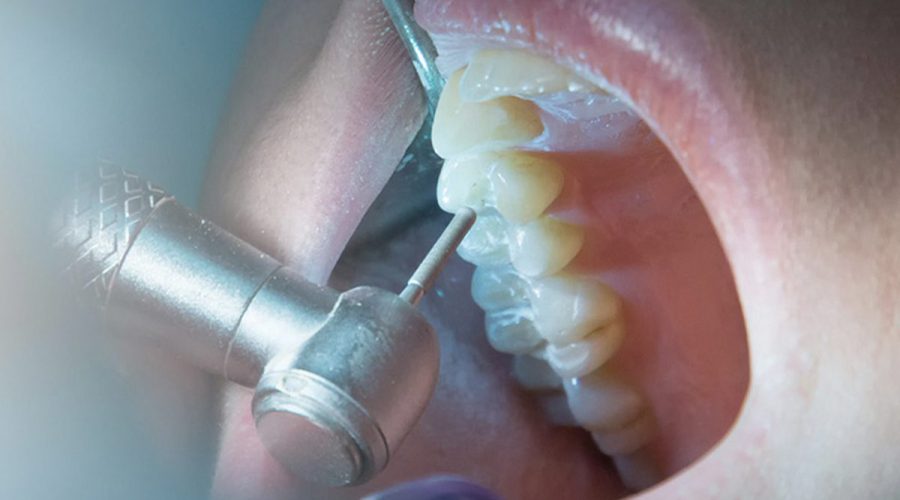What is Endodontic Treatment?
Endodontic treatment includes direct and indirect pulp capping. The goal is to keep the dental pulp in a viable state and restore the tooth to a complete functional unit. It also includes treating teeth with severely damaged pulp due to trauma or infection, so the pulp must be removed.
Practitioners perform the endodontic treatment to protect teeth whose pulp is damaged somehow, including those moments when the damage extends to the root tissue. The plan is to keep dental care in cities like antwerpen on priority. It is done for the protection of natural teeth.
It is crucial for maintaining the full function of the dentition and the related health benefits. Endodontic treatment includes the repair and treatment of all aspects of an infected tooth that has damaged or exposed the pulp to infection and the treatment of periapical tissue.
If necessary, seal the tooth from the root of the tooth, allowing it to continue to function structurally even if it is no longer feasible. The following process explains how an endodontic treatment is performed.
Step 1: Diagnose
The most critical aspect of endodontic treatment is the correct diagnosis of the teeth. There are specific instruments to help you understand the condition of the patient’s teeth: X-rays, percussion tests, endodontic testers, and internal sprays.
Step 2: Visit
The next step is to visit or create an opening to the tooth pulp cavity. This is achieved through the use of endodontic drills, manual or rotary files, and chelating agents.
Step 3: Tooth extraction
The next step is tooth extraction. This is usually achieved using a barbed needle, but clinicians will usually use a hand file or drill to help them when they think it is necessary.
Step 4: Debridement
The fourth step is debridement or thorough root canal cleaning. This step is done by using detergent and chemicals such as EDTA and chelating agents. A hand file can also be used in this step. Many doctors like to rinse the root canal with sodium hypochlorite rinsing solution to disinfect the root canal and remove any remaining bacteria.
You can use a traditional X-ray machine, place a hand file in the root canal, and mark the length. At this time, the vertex locator can also be used to confirm the working length.
Step 5: Drying
The next stage of the root canal procedure involves drying to seal the teeth and restore them to their natural appearance. The dry canal is just like that: dry the canal with a paper tip.
Step 6: Occlusion
As with many other steps, the root canal can be filled or occluded using various methods. These include root canal sealers, gutta-percha tips, heated gutta-percha guns or systems, stoppers, and spreaders. The plug may require the use of a heating element. Sometimes clinicians prefer to use teether products, which have a solid core with teether around them.
Step 7: Repair
Finally, it’s time to repair the teeth. According to the patient and plan, the temporary crown and bridge material must be inserted into the tooth within a short period. This “temporary” can be used for multiple reasons:
- When it is part of a two-visit procedure.
- When patients must return to their GP.
- When they need to work.
When the patient needs a crown, the column anchors the core accumulation material and the crown. Not every patient needs a crown, so composite fillings in root canal surgery may be the last step.
Types of Endodontic Treatment
Root canal treatment
The term root canal treatment means that endodontic treatment is indeed incorrect. The root canal is a part of the tooth, and the cavity inside the tooth is the home of nerve tissue, blood vessels, and other cells.
The root canal is a location in the tooth, and endodontic treatment is a dental surgery. However, the term root canal treatment is widely used in the context of endodontic treatment.
Endodontic retreatment
With proper care, even root-treated teeth can last a lifetime. But sometimes, the teeth after treatment do not heal usually, and they may become painful or sick months or even years after treatment.
If the tooth does not heal or a new problem occurs, the patient has a second chance. Additional procedures can help heal and save the tooth. If the patient feels pain or discomfort on a previously treated tooth, they should discuss follow-up treatment with the dentist.
Endodontic surgery
In rare cases, non-surgical root canal treatment alone cannot save teeth. In this case, the dentist may provide surgery, but they may recommend another place in some cases. Endodontic surgery can locate X-rays or minor fractures, or hidden root canals not found during previous treatments.
May also require surgical intervention to remove calcium deposits in the root canal or treat damaged root surfaces or bones around the teeth. Many surgical procedures can save a tooth, and the most common is apical resection or apical resection.
If there is persistent inflammation or infection in the bone area around the end of the tooth after root canal treatment, an apical resection is occasionally required.
Traumatic dental injuries
Tooth trauma can occur to people of all ages and activity levels. The cause could be a car accident, a fall from a staircase, or an elbow injury while playing basketball.
As with most dental procedures, the main goal of treating traumatic tooth injuries is to rescue teeth at risk of loss and restore their full function and appearance. In many cases, the difference between retained and lost teeth depends on taking the right actions immediately after the injury.
Dental implants
Implant surgery is classified as prosthetic (artificial) dentistry, but dental implants belgium is also considered cosmetic dentistry. People who have lost their teeth may feel insecure and unable to smile or talk. In addition, they help stimulate and maintain the jawbone, preventing bone loss and helping to support facial features.
What procedures does an endodontist perform?
An endodontist treats problems inside the tooth, and it may become inflamed or infected due to deep tooth decay, tooth trauma, and repeated dental work on the tooth. When this happens, you need to see an endodontist.
The most common operation performed by endodontics is the root canal, which is an operation to remove damaged or infected dental nerves and pulp.
Endodontic treatment is usually known to be done in one or two or more sessions, including the following steps:
- The dentist examines the teeth and performs X-ray examinations, and then performs local anesthesia.
- After the teeth are numb, the dentist will place a small protective film called “rubber dam” on the area to isolate the teeth and keep the teeth clean and saliva-free during the operation.
- The dentist makes a mouth on the crown of the tooth.
- After cleaning and carving the space, the dentist will fill the root canal with a rubber material called gutta-percha. The gutta-percha is glued to ensure that the root canals are completely sealed.
Why did the dentist refer to an endodontist?
If you have a toothache, your dentist will most likely refer you to an endodontist in antwerp. Although these experts account for only 3% of dentistry, they play an essential role in maintaining dental health.
When it comes to caring for the pulp inside the tooth, their expertise comes into play. Using high-tech tools and best practices, they can restore the teeth to their original state without the need for tooth extraction.
Dentists spent up to eight years in school to maintain and restore the dental health of patients. The endodontist goes beyond basic dental training through an additional two years of professional training.
During the different school years, endodontists learned to recognize all the different conditions that may affect the pulp and search for the best treatment options.
Although endodontists are trained to play their role as dental protection experts, they use high-tech tools to improve patient comfort and treatment results. These high-tech tools not only improve results but also help improve patient comfort during and after surgery.
In addition, due to their professionalism, endodontists focus on performing root canal treatments and other dental protection procedures for their patients.
During their full-time work, endodontists perform an average of about 25 root canal treatments per month, which significantly increases their experience in the field. These experiences can better understand the root cause of the patient’s discomfort and find the best treatment options.
Are a root canal and endodontic the same thing?
As mentioned above, root canal treatment is generally used in the context of endodontic treatment. To be more specific, root canal treatment is one of the types of endodontic treatment.




